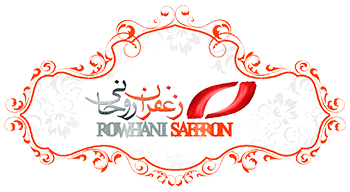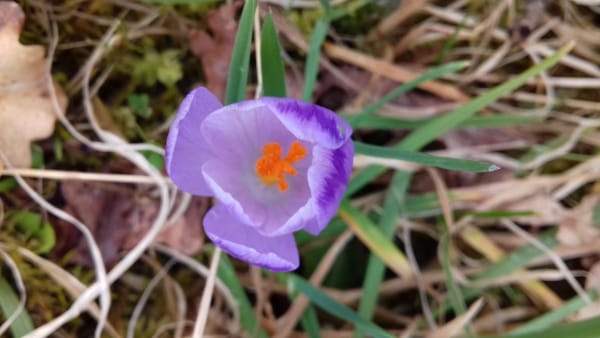Harvesting 160 kg of saffron in Alborz/43 hectares under saffron cultivation
Saffron, this fragrant plant, has long been the name of Iran for the world, such as caviar and pistachios, and this red gold shines among the goods and export items of our country.
Fortunately, saffron is compatible with the climatic conditions of Iran, and on the other hand, due to its production, significant employment has been achieved. This red gold is a water-less product, and this has made it possible to expand it in low-water areas. The high characteristics of red gold make it one of the most valuable and competitive commodities in global markets.
But it must be said; Alborz is one of the provinces where a group of farmers have entered the field of saffron production and currently operate several red gold farms.
With Mohammad Taj Al-Dini, Deputy Director of Plant Production Improvement of Alborz Jihad Agricultural Organization, about the situation of saffron cultivation and the plans for the development of red gold in Alborz Province.
Alborzi farmers produced 160 kilos of saffron last year
Alborz Agricultural Jihad Organization Deputy for Plant Production Improvement said: Saffron is not one of the main products of Alborz province in the field of agriculture because a very high level of the province’s lands is not dedicated to the cultivation of red gold.
He announced the total area of saffron farms in Alborz province as 43 hectares and said: out of this amount, 33 hectares of saffron cultivation is fertile and 10 hectares have not yet reached the reproductive age.
Taj al-Dini added: The highest area under saffron cultivation in Alborz province is in Nazarabad city, so that more than 26 hectares of the area under cultivation in this city is dedicated to saffron. Red gold is also cultivated in the cities of Savojbolagh, Eshtehard, Ferdis and Taleghan.
He said: Last year, the total saffron produced in Alborz province with an average yield of 2.1 kg per hectare was about 160 kg.
Alborz Jihad Agricultural Organization’s Deputy for Plant Production Improvement, pointing out that saffron farms in Alborz province are small and fragmented lands, said: out of 43 hectares of saffron farms in the province, 34 hectares include 170 plots, each of which is They have an area of less than one hectare.
Taj al-Dini announced the existence of 153 saffron farmers in Alborz province and said: Saffron-related programs in this province are more educational, so that training classes are held for farmers who want to enter the field of saffron cultivation.
Explaining that the Ministry of Jihad for Agriculture, based on the capacities of a province, prioritizes the cultivation of horticultural and agricultural products, he added: In Alborz, wheat, barley or canola are very important in the agricultural sector, but when farmers enter the field. Saffron cultivation announced their readiness to hold training classes.
Deputy of Plant Production Improvement of Alborz Jihad Agricultural Organization, stating that 125 out of 153 saffron farmers are from Nazarabad city, said: the number of saffron farmers in Savojbolagh and Eshtehard counties is 13 and 11, respectively, the rest of the farmers are from cities. Karaj, Ferdis and Taleghan.
Taj al-Dini, pointing out that saffron is a low-water product and on the other hand, after its production, has a good economic benefit for farmers, said: When provinces such as South Khorasan work mainly in the production, processing and export of saffron, it is natural The policy of the Ministry of Jihad for Agriculture regarding saffron production is in this province, therefore, subsidized support in the discussion of saffron production is more focused on that province.
In response to whether the market for saffron produced in Alborz province is domestic or foreign, he said: Currently, farmers in their traditional and special packaging sell red gold produced in the province in the domestic markets.
The Deputy Minister of Crop Production Improvement of Alborz Jihad Agricultural Organization, regarding the task of exporting saffron from Alborz province, explained: If we take into account 160 kg of saffron last year, which was produced by 153 farmers, the share of red gold production for each The exploitation of the province is a little more than one kilo per year, so they can only cover the domestic market and currently the production volume of Alborz saffron is not high for export.
Regarding the fact that more farmers in the province want to cultivate saffron, Taj al-Dini said that the Ministry of Jihad for Agriculture will provide the ground for their activities. Be a farmer, the ministry will have the necessary cooperation.
He said: Currently, saffron cultivation is fully established in Ahmadabad, Nazarabad city, and if a person has enough land and water for this work, his action will be welcomed and he can participate in special training programs.
Alborz Jihad Agricultural Organization Deputy for Plant Production Improvement also said: in the discussion of obtaining banking facilities from domestic sources, the necessary cooperation is done to saffron farmers and such support is followed for farmers in the province who enter the field of red gold cultivation.







Get Social